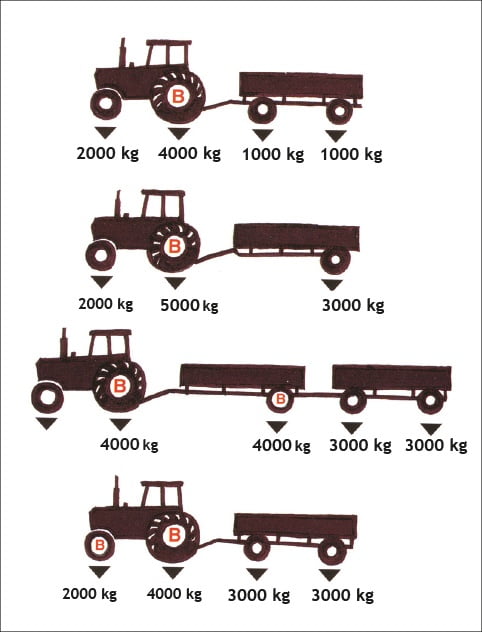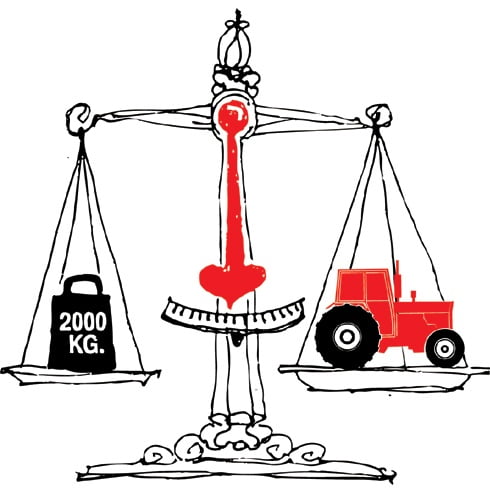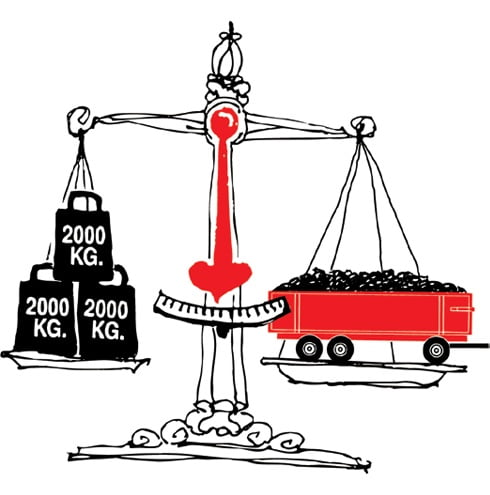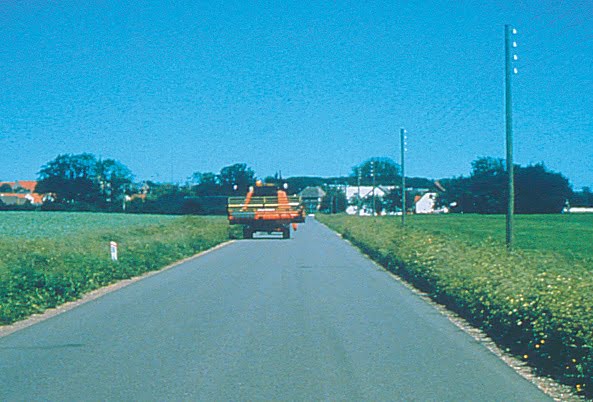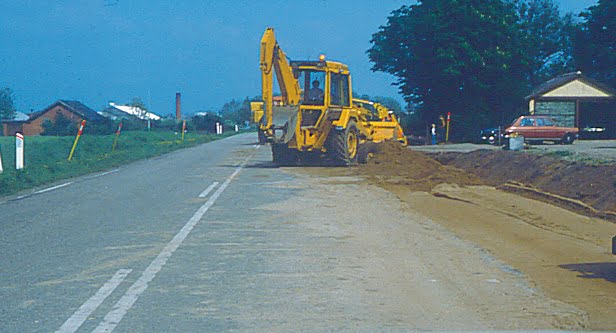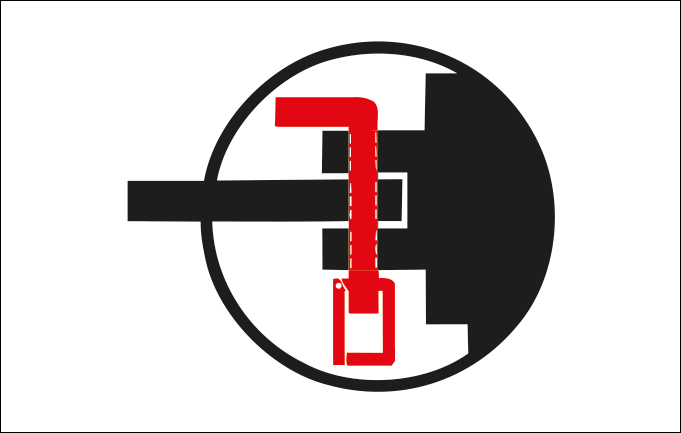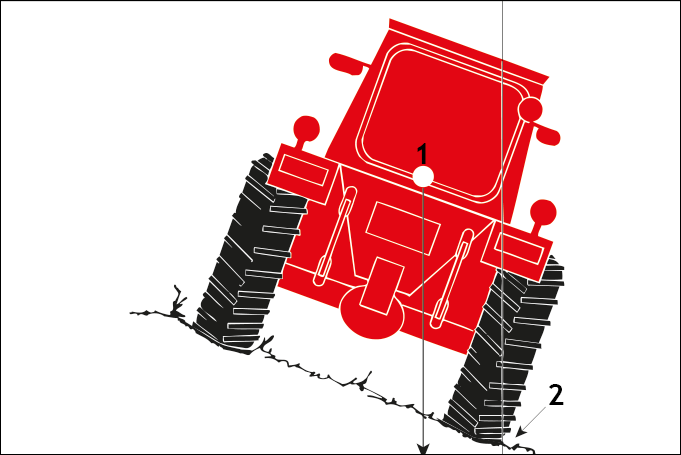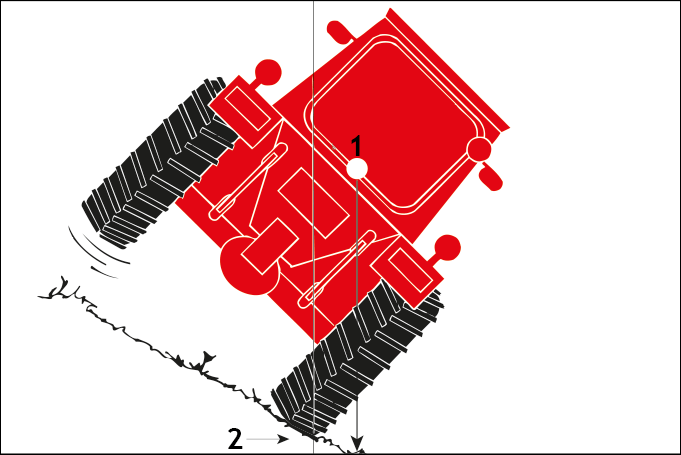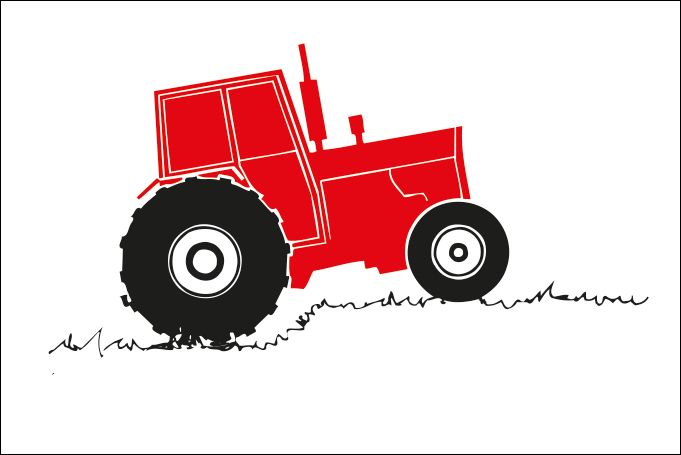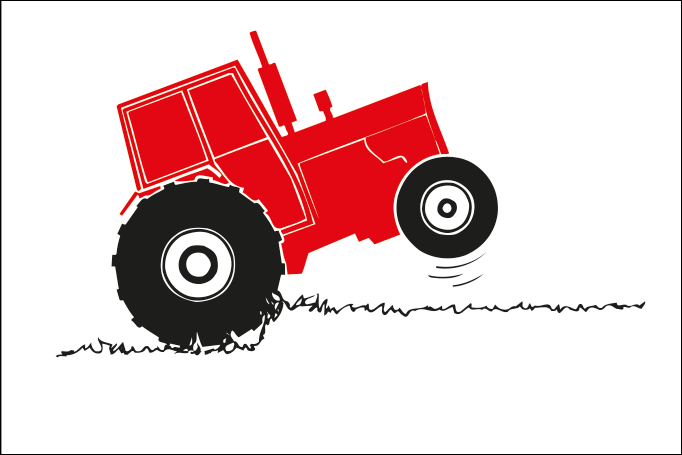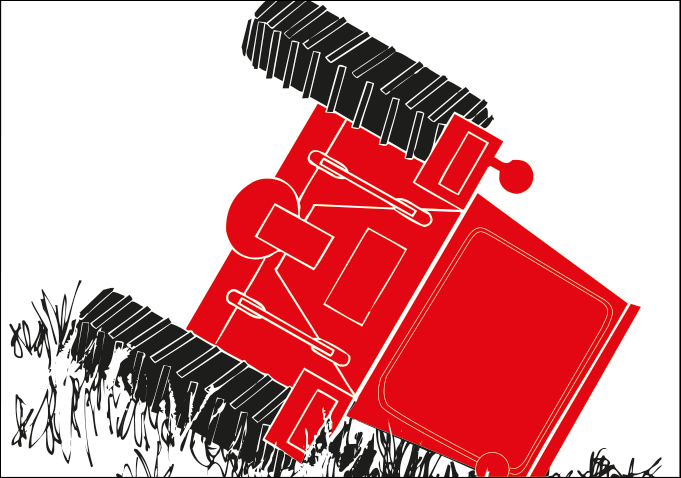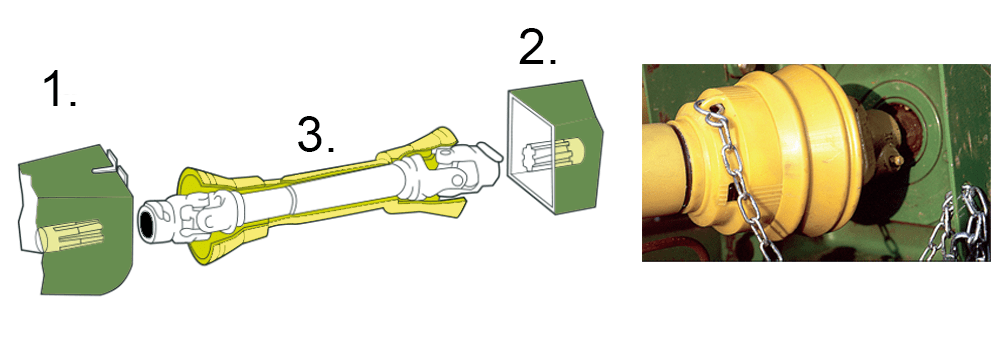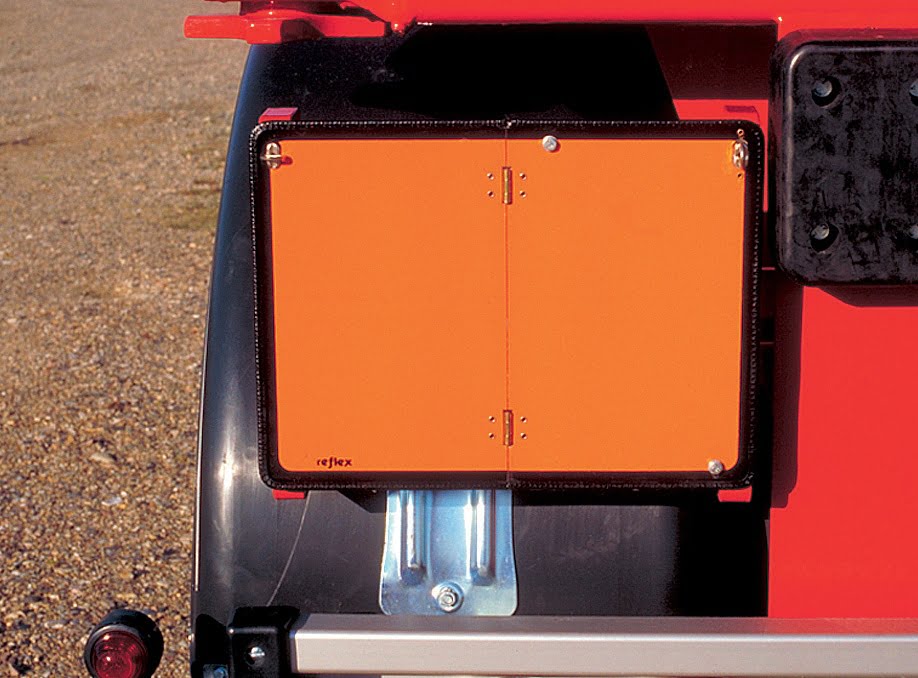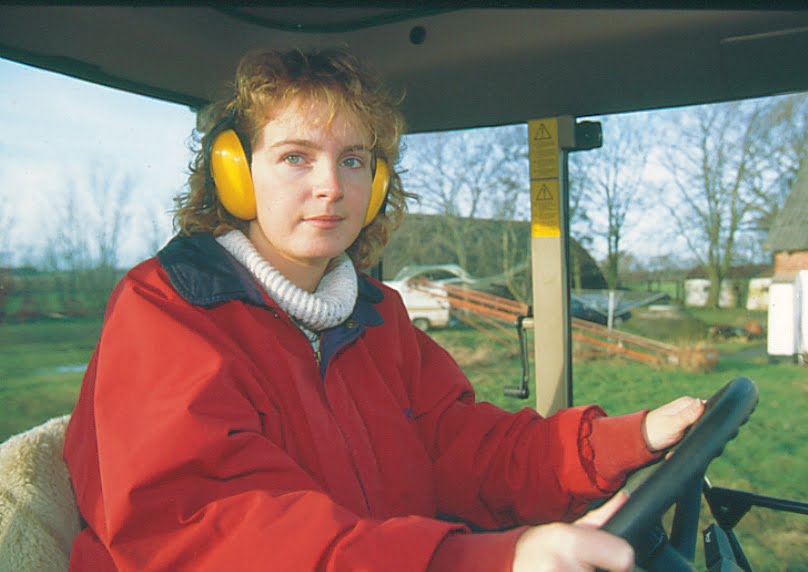Tractor
Driving school
theory book
for tractor
Section 3
Engine
The engine must be designed and maintained in such a way that it does not produce unnecessary smoke and noise while driving.
Trailer.
Tractor trailers must fulfil the following requirements:
1) A maximum of two trailers or one trailer implement and one trailer (in that order) may be coupled, but never two trailer implements. In general, the maximum permitted length of the vehicle combination is 18.75 metres.
2) The trailer may have a maximum width of 2.55 metres. However, the trailer may be permitted to exceed 2.55 metres in width, but not more than 3.00 metres, provided that the excess is solely due to wheel mounting and wheel guards. Such a trailer and tractor may only be used for driving between field and farm, between properties in common ownership, or between the machine centre and this customer. Furthermore, to and from inspections.
3) The legal requirement of 18.75 metres in length and 2.55 metres in width may be waived when driving between fields and farms, between properties that have the vehicle combination in common ownership, or between a machine centre and its customers, where a vehicle combination length of 22 metres is permitted when driving with 2 trailers.
4) A tractor must be loaded so that at least 20 % of the tractor's actual total weight rests on the steered wheels.
5) The vehicle combination does not weigh more than 44 tonnes.
6) That the authorised total weight of the tractor or the maximum weight of the tractor stated in the type approval certificate is not exceeded when driving with a trailer that partially transfers weight to the tractor. This type of trailer is very common as a tractor trailer.
7) In general, a trailer must have brakes and at least 50% of the actual weight of the combination must rest on braking wheels. If this can be met by the towing vehicle alone, the trailer does not need brakes.
8) The trailer must be coupled to the tractor in a safe manner.
9) The trailer brakes must operate automatically when the tractor's service brake is applied.
Examples of vehicle combinations with/without brakes
Trailers must be equipped with the following reflectors and lights:
At the front: Two white reflectors, two white position lamps if the trailer width exceeds 1.6 m. Two marker lamps if the trailer width exceeds 2.1 m.
On the side: Yellow reflectors, also yellow marker lights if the length of the trailer exceeds 6 metres.
At the back: Two triangular red reflectors, two red tail lights, two red stop lights, two amber indicators and, if applicable, a licence plate light, plus two red marker lights if the width of the trailer exceeds 2.1 m. (all reflectors must be approved).
Trailers must be labelled as slow-moving with a "tractor triangle". Rear underrun protection (rear bumper) if the rear, lowest point of the body is more than 0.4 metres behind the rear wheels.
When stopped or parked on the road during the headlight switch-on time, uncoupled trailers must be marked with at least 2 red lights to the rear and 2 white lights to the front.
The "Power Tools" category.
A power tool is defined in the Road Traffic Act as a motorised vehicle that is primarily designed as a working tool and is constructed for a maximum speed of 40 km/h. and can only be driven at a higher speed with a significant design change. Furthermore, motorised vehicles intended to be driven by pedestrians are considered to be power-driven tools, regardless of the purpose for which the vehicles are designed.
Examples of typical power tools include
Self-propelled construction equipment for excavation and road construction, such as dozers, scrapers, forklifts, excavators or road rollers.
Trailer coupling
The connection between tractor and trailer must be designed so that the trailer's wheels follow the tractor's track as closely as possible when turning. The coupling on the trailer is designed as a bar or triangular connection.
The coupling parts of the vehicles must fit together and must be able to provide sufficient movement. There must be no significant play between the coupling parts.
The figure shows a commonly used coupling where the coupling bolt is fitted with a fuse.
The coupling itself must be fitted with a safety device to prevent the trailer from coming loose.
Trailer brakes
If the trailer has brakes, they should work automatically when the tractor is braked. The most common automatic braking system works in such a way that when you apply the service brake (foot brake) on the tractor, the tractor sends hydraulic pressure to the trailer through a special hose connection to the trailer that activates the trailer brakes. The trailer brakes can also be operated by compressed air.
The brake must work sufficiently effectively and quickly
The braking distance must not exceed 11.5 metres at 30 km/h. with a fully loaded trailer. The trailer must be equipped with a parking brake that must be able to keep the trailer braked on a 12% inclined road in a clamped position.
Tractor accident.
Rollover and rollover accidents are the most common tractor accidents.
The tractor's centre of gravity is quite high above the ground in relation to the tractor's track width and wheelbase, and the higher the centre of gravity, the more unstable the tractor is.
Overturning accidents.
A tractor can tip over:
1) during swinging
2) during braking
3) due to slopes in the terrain
4) when pressure is applied from the following vehicle or machine (scissor accident).
Overturning can also be caused by a combination of these factors.
A tractor can steer, i.e. the front tyres are lifted upwards:
1) due to rear wheel locking on terrain
2) due to too high a drag point
3) too heavy a load on the drawbar or coupling part. Steepness can also occur as a combination of the above conditions, and the risk of steepness is always increased when starting off and when travelling uphill.
Some rules to avoid rollover and tip-over accidents:
1) Get to know your tractor and learn how it reacts.
2) Be aware of the terrain where you are travelling and take unevenness into account,
obstacles, slopes, ditches and the like.
3) Remember to link the pedals together if you have used independent wheel brakes. Do not use single wheel braking at higher speeds.
4) Do not drive with a heavier load than the tractor and terrain conditions allow.
Be careful when cornering downhill.
5) Do not use heavier carrying tools and the like than the tractor is designed for and do not let it carry more than it can handle.
Extra weights may be necessary.
6) If the tractor is stuck, back the tractor out or get other assistance.
Never place solid objects in front of the rear tyres.
7) Never use industrial hooks or other high pull points for heavy and hard pulling, but use extra weights or add water to the rings for better friction. Where possible, back off when pulling hard.
Never attach the drive to front axles when pulling forwards on uneven terrain.
8) Always be ready with your foot on the clutch in situations where there is a risk of pitching and immediately disengage the clutch if the tractor starts to pitch.
Release the clutch softly and slowly during heavy pulling or when starting uphill.
Power transfer accidents.
To avoid hazards when transmitting power to rotating shafts etc. protective guards must be used. The requirements for PTO shafts are based on effective shielding of both shafts and universal joints. If PTOs are not used, the tractor's PTO itself must be protected.
Shielding of power take-offs.
Poison transport.
Authorised pesticides that are diluted to use concentration are exempt from the special rules that otherwise apply to the transport of toxic substances on public roads. These rules categorise toxic substances into three classes.
Highly toxic substances Toxic substances Hazardous substances. When the substances are properly packaged and labelled with a hazard label or approved label, you may transport the following quantities on public roads.
For all other transports, the tractor must be marked with special orange danger signs (30 x 40 cm) and must be accompanied by
- approved fire extinguisher
- Documentation of the nature of the substances
- written instructions on accident precautions.
If the transport is in tanks, you must also bring
- toolbox
- stop block
- two lights that can show amber light or flash.
For more information on the transport of dangerous goods, contact the Danish Working Environment Authority.
Differential lock.
Many tractors are equipped with a differential lock so that the differential can be disabled when the two rear axle halves are connected. Of course, when the differential lock is used, the tractor does not react normally to the steering wheel and dangerous situations can arise when attempting to turn.
Tractors must be equipped with indicators, two in front, two on the side and two at the rear.
The indicator light must be amber in colour and clearly visible in sunlight. Must flash at an appropriate frequency (speed).
The indicator light must be connected to the indicator lamp or audible signal. Faults are detected if the indicator light does not switch on, is constantly lit or if its flashing speed changes significantly.
In addition, the turn signal must be designed as a hazard warning signal, i.e. all turn signal lights flash simultaneously.
Unnecessary noise and more.
The driver of a tractor or motorised implement must operate the vehicle in such a way that it does not emit unnecessary noise, smoke or gases.
Smoke and noise.
When an engine is worn out or incorrectly tuned, it will perform poorly and produce visible smoke. The content of hazardous and toxic substances in the exhaust gas will also be higher than normal and contribute significantly to air pollution.
Therefore, there are strict limits on how toxic the exhaust fumes can be.
The exhaust system can become leaky at the joints and seals due to corrosion and combustion. If the leaks cause the exhaust gas to leave the system before the muffler, it will cause excessive unnecessary noise and is prohibited.
Carbon monoxide poisoning.
When an internal combustion engine operates, carbon monoxide is produced, which, along with the exhaust gas, is released into the open air. Carbon monoxide makes up approximately 2-5% of the total amount of exhaust gas. Carbon monoxide cannot be smelled or seen and is dangerous to breathe even in small amounts. The effects of severe carbon monoxide poisoning will be abnormal fatigue and a strong urge to sleep, and if the poisoning persists, fatigue will progress to unconsciousness and death. Technically, it's carbon monoxide, which in the human lungs is absorbed into the bloodstream about 200 times more easily than oxygen, and therefore "takes up" the space in the bloodstream that oxygen would otherwise occupy. If you repeatedly have severe headaches after driving a tractor, you should suspect carbon monoxide poisoning. Staying in an enclosed space with a tractor with the engine running would be life-threatening.
The cab of an older tractor is a noisy workplace, even if noise limits have been set. Loud noise puts you at risk of permanent hearing damage, and even if the tractor is legal, it's in your best interest to wear hearing protection.
Test your knowledge
Cat. TM - Section 3
Vælg det eller de svarmuligheder som du mener er de rigtige.
